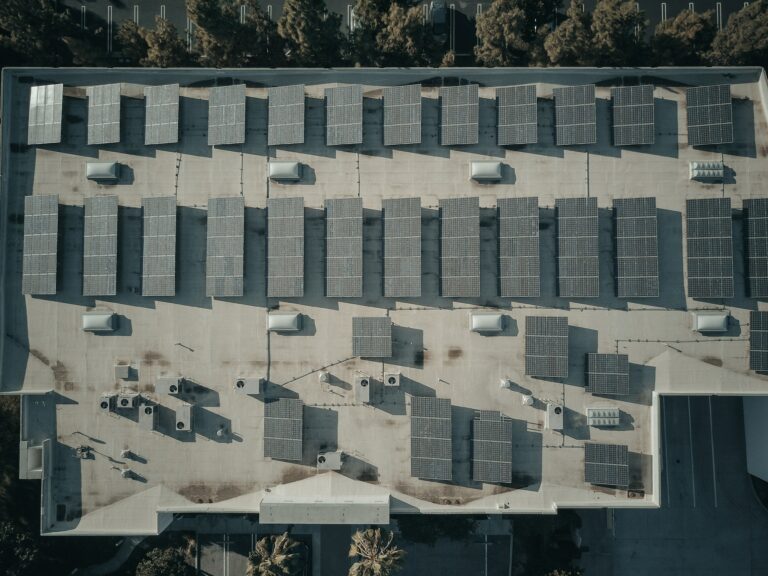
By David Myers, LEED AP O+M, vice president of operations at Corum Real Estate Group
My first venture into the world of sustainability happened almost 10 years ago when I was working for Cushman & Wakefield out of California. At that time, new LEED buildings had started popping up more and more frequently and the concept of working in an environmentally sustainable building was advancing beyond simply being a nice idea. Intrigued by this concept, I set out to learn more. In 2012, I received my LEED Green Associate credential with C&W, only to further expand and complete my LEED AP O+M certification in 2021. Given how fortunate I’ve been to spend real time working on and in LEED-designated buildings, I’d be remiss not to share the upcoming changes that most buildings will be facing in the coming years. It’s my hope that we, as managers, can utilize these learnings as a guide for owners and tenants.
The Energize Denver Ordinance marks a momentous step towards sustainability, but its implementation will be a complex undertaking for building owners and property managers. The regulations include specific targets for 2024, 2027, and 2030 for building over 25,000 square feet. Coupled with staggered deadlines for buildings with gross floor areas between 5,000 and 24,999 square feet, the rollout presents a web of responsibilities. Specifically, owners must demonstrate that they have met the 2024 target by June 1, 2025, the 2027 target by June 1, 2028, and the 2030 target by June 1, 2031. Buildings of 5,000 to 24,999 square feet have different requirements, needing to install all LED lights or equivalents by the end of 2025, 2026, or 2027, depending on their size.
For owners and property managers, the work begins with understanding these intricate requirements. Buildings larger than 25,000 square feet are subject to stringent EUI targets, while smaller buildings have the alternative option of LED lighting or solar installation. The timeline for compliance differs between these categories, adding to the complexity. As property managers, our task is to embrace these requirements, understand their implications, and prepare a comprehensive compliance plan. The first step in the process is to ensure that benchmarking has been done accurately. Then, building owners should investigate target adjustment possibilities. For buildings with features such as data centers, unique operating hours, or swimming pools, the 2030 EUI target could potentially be adjusted.
The cost implications can be substantial. Meeting the EUI targets might necessitate considerable upgrades to heating, cooling, and lighting systems. Additionally, investment in renewable energy options, whether on-site or off-site, may require significant capital outlay. Understanding the available rebates, incentives, and financing options becomes paramount. Exploring financing options, like C-PACE and the Colorado Clean Energy Fund, will be essential.
One crucial recommendation for property managers is to consider getting an energy audit on the buildings they manage. Energy audits will provide a detailed understanding of the building’s current energy consumption and will identify areas for improvement. Xcel Energy’s Business Energy Assessments is an excellent resource for this, providing insights into the best type of audit for each building.
Of course, property managers are uniquely positioned to bridge the gap between the ordinance’s requirements and the owner’s understanding and compliance. This role involves extensive communication and education. Managers must present clear, concise information on the legal requirements, timelines, and the work needed to meet these demands. Workshops, informational sessions, and customized reports can be used to explain the requirements and potential paths to compliance. Collaborating with energy experts and auditors, managers can create a tailored plan for each building. The details of these plans, along with potential costs, savings, and the long-term benefits of energy efficiency, must be communicated transparently to the owners. Additionally, property managers should provide clear, detailed information about the ordinance, the changes it requires, and the timeline for these changes. They should also explain the potential benefits, including long-term energy cost savings, increased building value, and contribution to environmental sustainability.
The impact of these changes extends to the tenants as well. Energy efficiency upgrades can lead to construction noise, temporary disruptions, and potentially higher costs in the form of rent or CAM fees. Therefore, tenants must be brought into the conversation early and kept informed throughout the process. Regular updates through emails, newsletters, or tenant meetings can help to ensure that tenants understand the reasons behind the changes and the benefits they can expect. Emphasizing the long-term savings in energy costs, improved comfort, and the positive environmental impact can, too, help in garnering support.
The Energize Denver Ordinance embodies a long-term vision for sustainability. While the path to compliance may be marked by complexity and challenges, it also offers an opportunity to reimagine our buildings as more energy-efficient, comfortable, and environmentally responsible spaces. Property managers, unique in their role, hold the keys to successful compliance. By approaching such with a clear understanding, strategic planning, and open communication, we can turn this challenge into a triumph of sustainability. And that’s a win-win for us all.
David Myers joined Corum in late 2021 and is responsible for the day-to-day operations of the company’s Commercial and Residential Property Management Platforms. Prior to joining Corum, David managed Denver’s office portfolio for Urban Renaissance Group. It was there that he oversaw building operations, leasing, construction management, capital investment, financial reporting, and business development.
Having spent the last 15+ years in the commercial real estate world, David has managed over 4.5 million SF of commercial properties, valued at over $1.5 billion, and has overseen $20 million in tenant improvement, and capital projects. He has experience with Class A and B office, historic, industrial, and retail properties, having repositioned several during his tenure. David received his bachelor’s degree in business from the University of Southern California, Marshall School of Business, with a triple concentration in Entrepreneurship, Leadership Development, and Communications.









